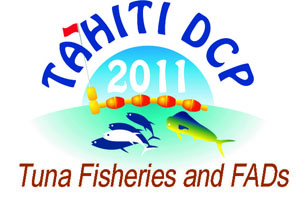The fisheries on floating objects of the Eastern Pacific
1 : Inter-American tropical Tuna Commission
* : Corresponding author
8604 La Jolla Shores Dr la Jolla, CA 92037 -
États-Unis
Setting on tuna schools associated with floating objects has been a component of the purse seine fishery from its beginnings. It was based on sets on logs or branches that had been carried out to sea by the tropical rivers of the region at the beginning of the rainy season. In the early 1990s, the “dolphin-safe” policy adopted by some canneries forced many boats to search for tuna in alternative ways, and, after some unsuccessful attempts in some regions, the fleet found a region where devices deployed by the fishers (Fish Aggregating Devices, FADs) were very productive. The fishery on Fish Aggregating Devices expanded at a fast pace, and increased the range and the production of the fishery in a major way. We will describe the log set fishery, the transition to the FAD fishery, and the operational characteristics. The change in fishing method resulted in a major geographical change, a significant targeting change from yellowfin to skipjack, and a transition from a seasonal to a year round fishery. After some experimentation, the design of the FADs began to converge, but there is still a fluid situation, where new concepts (material, shape, operational modes, equipment, etc.) are introduced and tested with frequency. We will cover the geographical expansion, the evolution of the construction, the major operational modes, characteristics of sets, etc. for the eastern Pacific region.

 PDF version
PDF version
